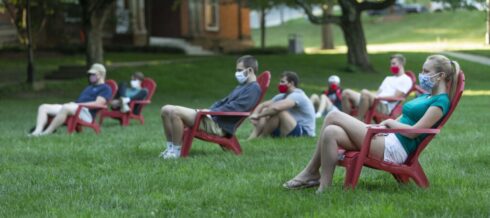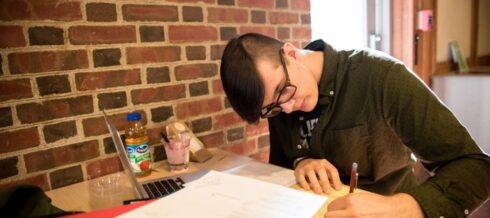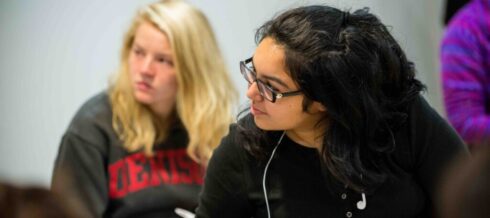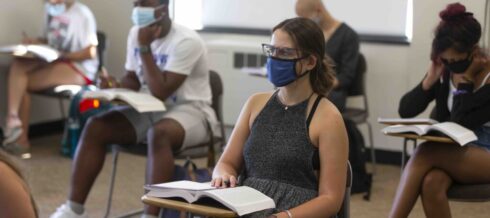Safely sharing hands-on work – Keith Spencer, Studio Art
The problem
I teach painting, a very hands-on experience. Students need to clearly see me demonstrate various techniques and procedures. In the past, this meant students gathering around my worktable (pictured below). While this generally worked, such crowding around the table was not a socially distanced experience. Moreover, even during “normal times” with 18 students, there were always a few on the fringe of the group who couldn’t quite see what was going on.










